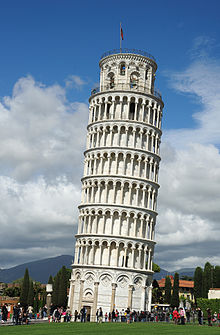
It’s a familiar photo snapped by sightseers in the Italian city of Pisa: The subject stands in the foreground pretending to prop up a curiously crooked eight-story tower in the background. The Tower of Pisa’s extreme lean has been around a lot longer than the art of silly tourist photography. The tower, meant to function as a bell tower, started to sway soon after construction on it started more than 800 years ago. Its foundation was set on soil too soft to support its weight. The tower began to lean as soon as its builders completed the second floor in 1178. Construction continued off and on for the next 192 years, but attempts to straighten the tower only made it worse. By the time the tower was completed in 1370, its lean had increased to 1.6 degrees. Its slow topple continued over the centuries, until it eventually reached 5.5 degrees.
It’s stable for now, thanks to some modern architectural mojo. Engineers have shored up the foundation, installed counter-weights and cables, and removed soil from the non-leaning side – fixes that reduced the lean by about 1.5 degrees. The tower is still 13 feet (4m) off its center, but stable, meaning the Leaning Tower of Pisa won’t become the Tumbled Tower of Pisa for at least 300 years.
Picture Credit : Google

